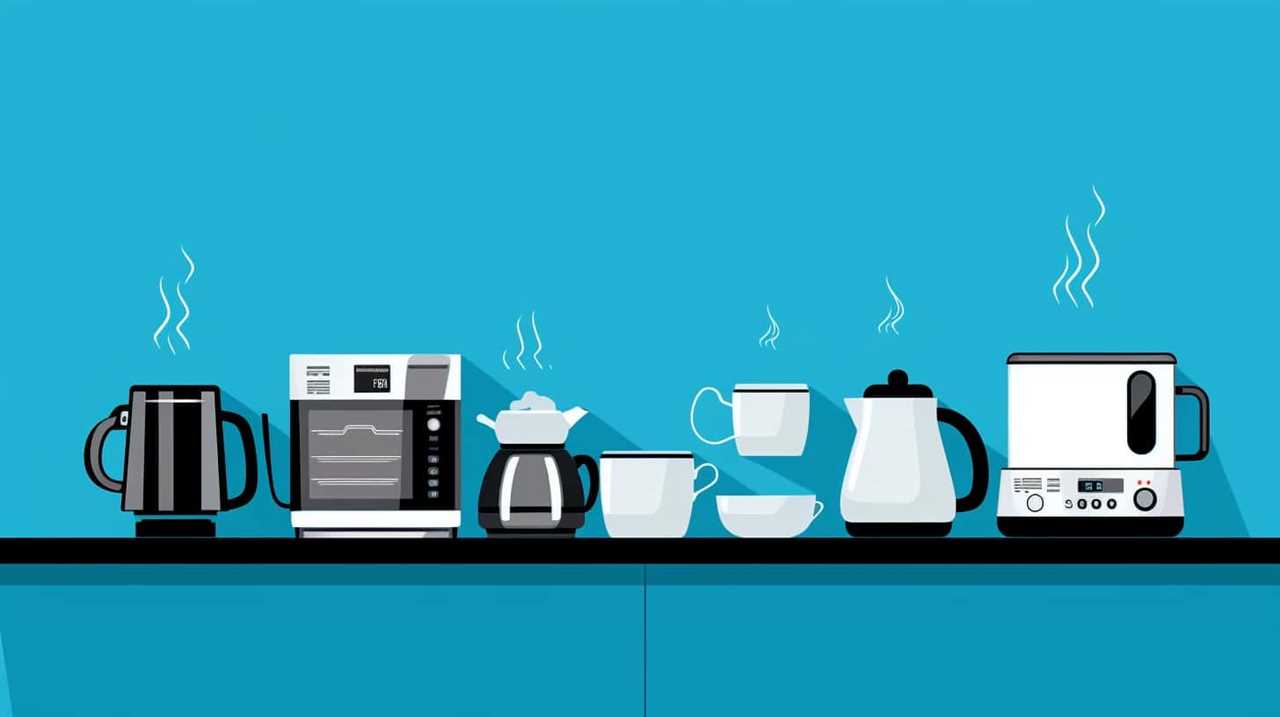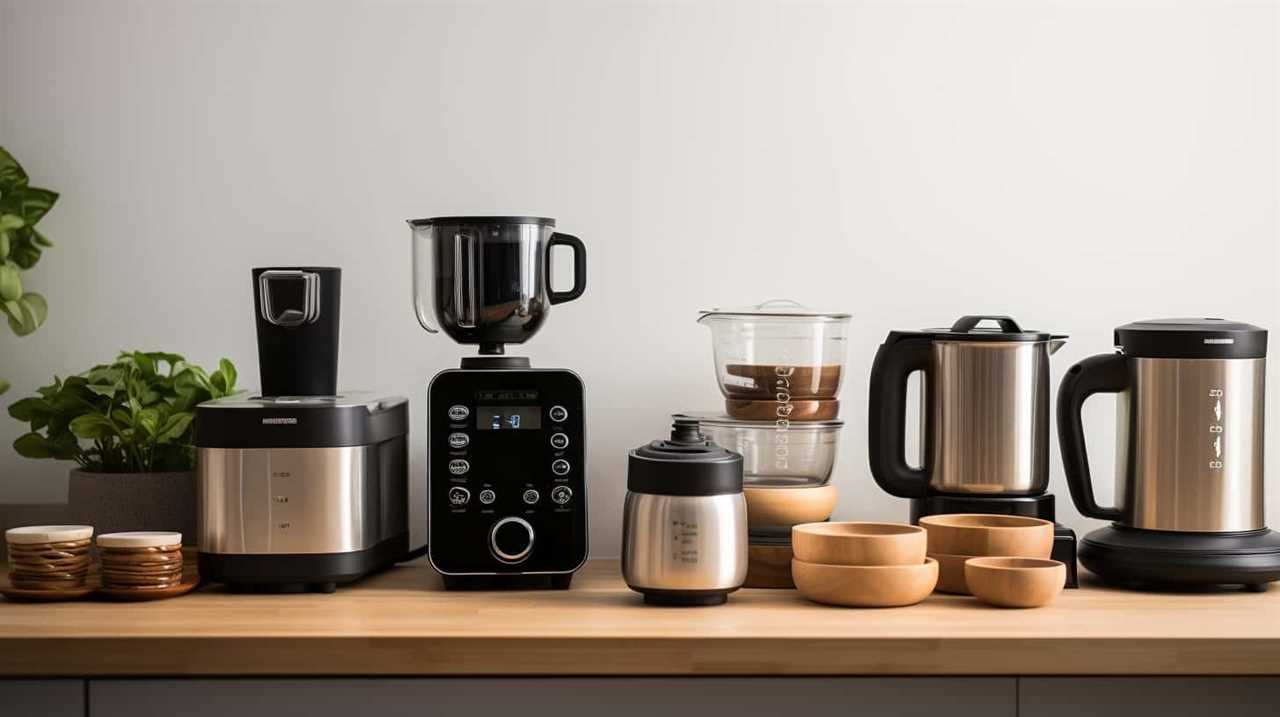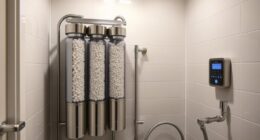Ever thought about whether appliances still consume electricity when they’re plugged in but not being used? The answer may shock you.
In this article, we delve into the world of standby power consumption and uncover the reality behind idle appliances. We’ll debunk common misconceptions and explore how appliances draw electricity in standby mode.
Get ready to discover the costs of idle appliances and learn valuable tips for minimizing standby power consumption. It’s time to take control of your appliance electricity usage.
Key Takeaways
- Standby power consumption, also known as phantom energy or vampire power, refers to the electricity used by appliances when they are plugged in but not in use.
- Idle power usage can account for a significant portion of household energy consumption.
- Power-saving techniques such as using power strips with integrated switches or completely unplugging appliances can minimize phantom load.
- Energy Star certified appliances are designed to consume less power during idle periods.
Understanding Standby Power Consumption
Understanding the standby power consumption of appliances is important because it helps us identify how much electricity they continue to use even when they aren’t in active use. Standby power, also known as phantom energy or vampire power, refers to the electricity consumed by appliances when they’re plugged in but not in use.
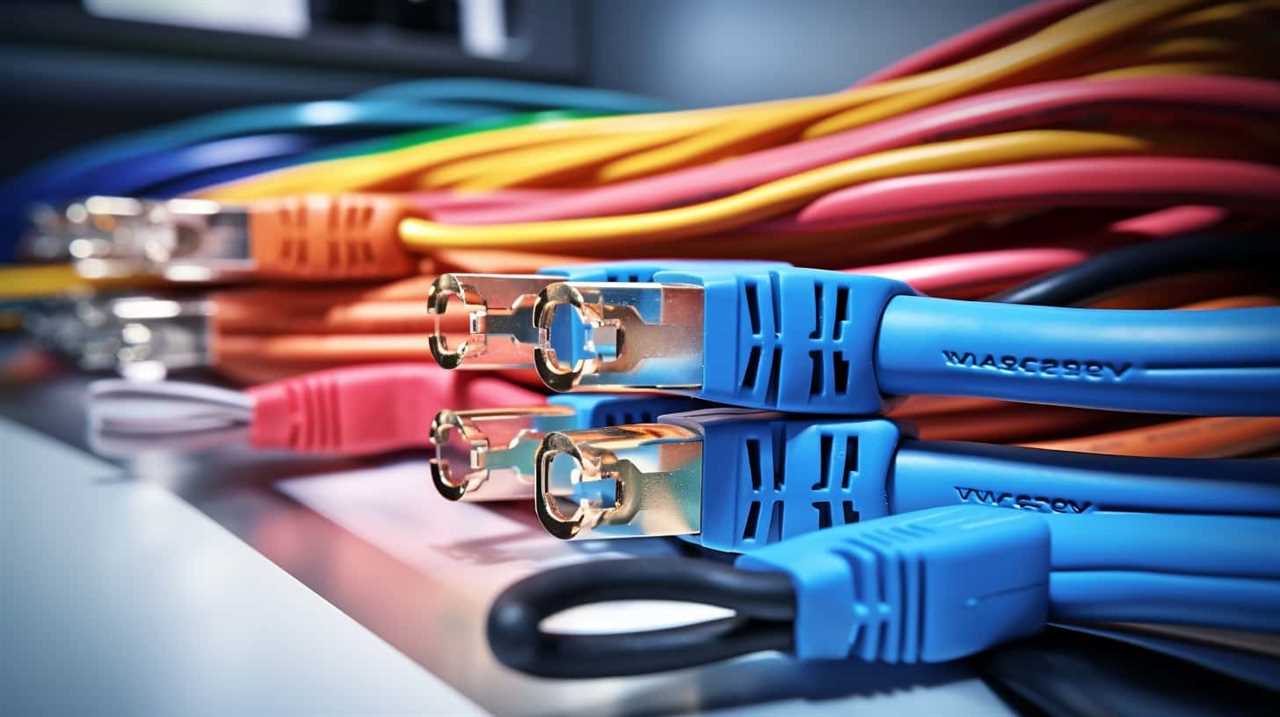
This idle power usage can account for a significant portion of household energy consumption. To reduce standby power consumption, power saving techniques can be implemented. These include using power strips with on/off switches, unplugging devices when not in use, and investing in energy-efficient appliances.
The Truth About Idle Appliances
When it comes to idle appliances, it’s important to understand their power consumption.
Even when not in use, appliances still draw electricity, albeit in smaller amounts.
However, there are energy-saving standby options available that reduce power consumption during idle periods.
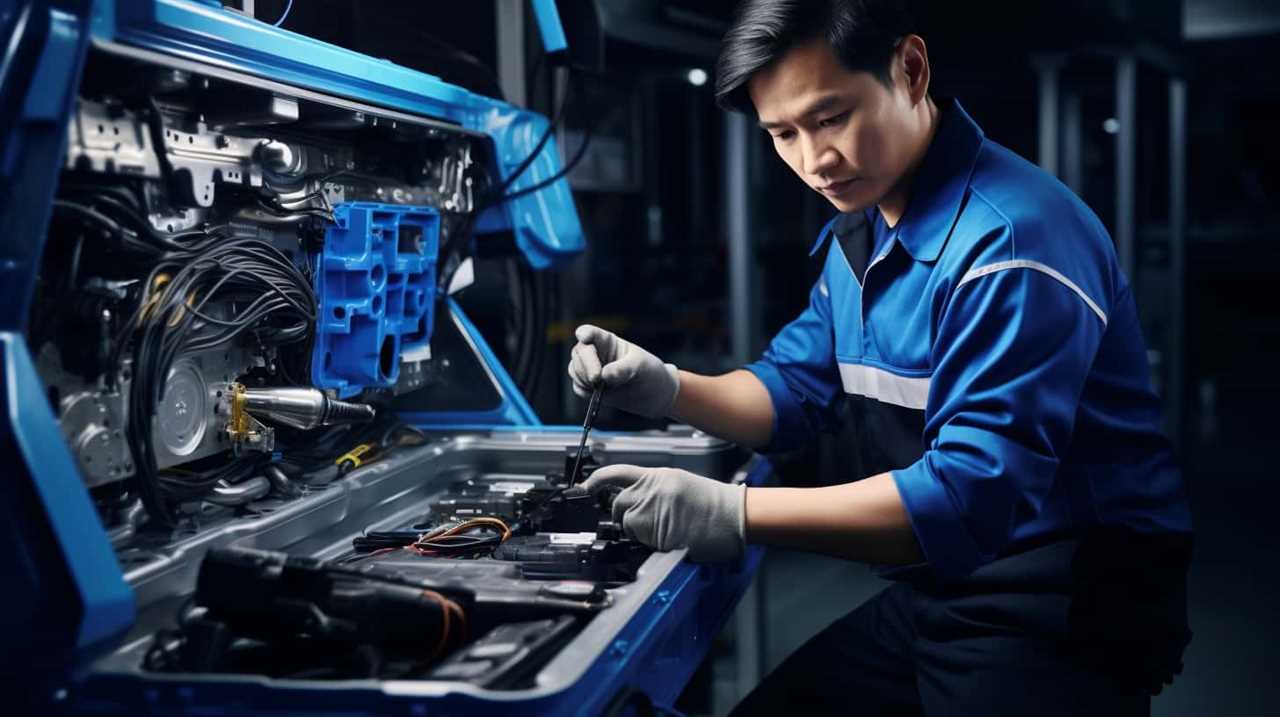
To save even more electricity, consider unplugging appliances when not in use.
Power Consumption During Idling
How much electricity do appliances actually consume when they’re idle? Understanding power drain during idle periods is crucial for reducing idle energy usage. Here are three key factors to consider:
- Standby Power: Some appliances, such as televisions and game consoles, consume power even when they’re in standby mode. This power is used to maintain certain functions like remote control activation or clock display.
- Phantom Load: Many appliances continue to draw a small amount of power even when they aren’t in use. This is known as phantom load or vampire power. Common culprits include chargers, computers, and audio equipment.
- Energy Star Ratings: Appliances with Energy Star certification are designed to consume less power during idle periods. Look for the Energy Star label when purchasing new appliances to ensure lower energy consumption.
Energy-Saving Standby Options
Now let’s delve into the realm of energy-saving standby options to shed light on the truth about idle appliances and how they can significantly reduce our electricity consumption.
Energy efficient standby options are designed to minimize power consumption while appliances aren’t actively in use. One such option is the power-saving mode, which automatically reduces the energy consumption of appliances when they’re idle for a certain period of time. This mode allows appliances to remain in a low-power state, ensuring that they’re ready for immediate use while consuming less electricity.
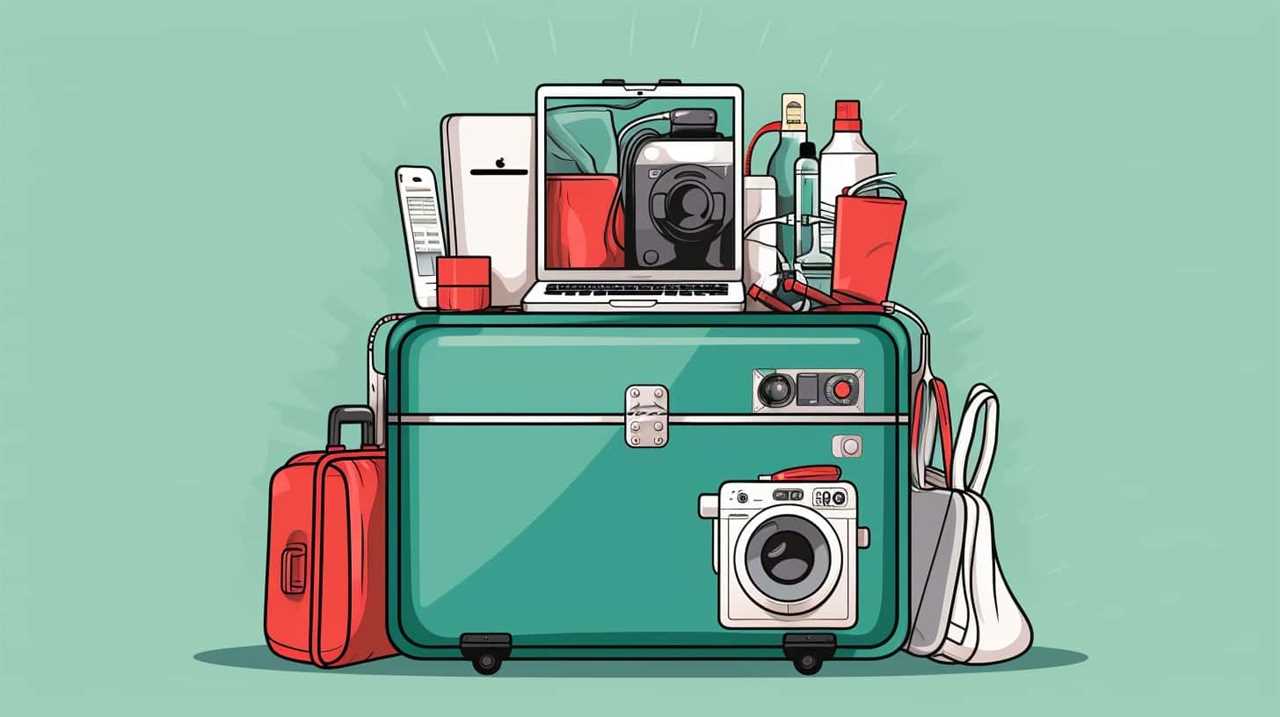
Another option is the timer function, which allows users to set specific times for appliances to turn off completely, eliminating any standby power consumption.
Unplugging to Save Electricity
Appliances continue to consume electricity even when they’re plugged in, highlighting the importance of unplugging to save electricity. Unplugging benefits both the environment and your energy bill by conserving energy that would otherwise be wasted. Here are three reasons why unplugging is essential for energy conservation:
- Standby mode isn’t always efficient: Many appliances consume a significant amount of electricity in standby mode. Unplugging them completely ensures zero energy usage.
- Vampire power drain: Even when turned off, appliances like TVs, computers, and phone chargers draw power from the socket. Unplugging eliminates this ‘vampire power’ drain.
- Fire safety: Unplugging appliances reduces the risk of electrical fires caused by faulty wiring or overheating.
By actively unplugging your appliances, you can take control of your energy consumption and contribute to the larger goal of energy conservation.
Now, let’s address some common misconceptions about plugged-in devices.

Common Misconceptions About Plugged-In Devices
Many people have misconceptions about the energy consumption of plugged-in devices. One common misconception is phantom power consumption, where devices continue to use electricity even when not in use.
Another misconception is the extent of standby power usage, with many assuming it’s negligible. However, both of these factors can contribute significantly to overall energy consumption.
It’s important to be aware of these misconceptions and consider energy-saving options available to reduce unnecessary electricity usage.
Phantom Power Consumption
We often underestimate the extent of phantom power consumption from our plugged-in devices. Phantom power, also known as standby power or vampire power, refers to the electricity consumed by devices even when they aren’t in use. This can be a significant source of energy waste in our homes and offices.
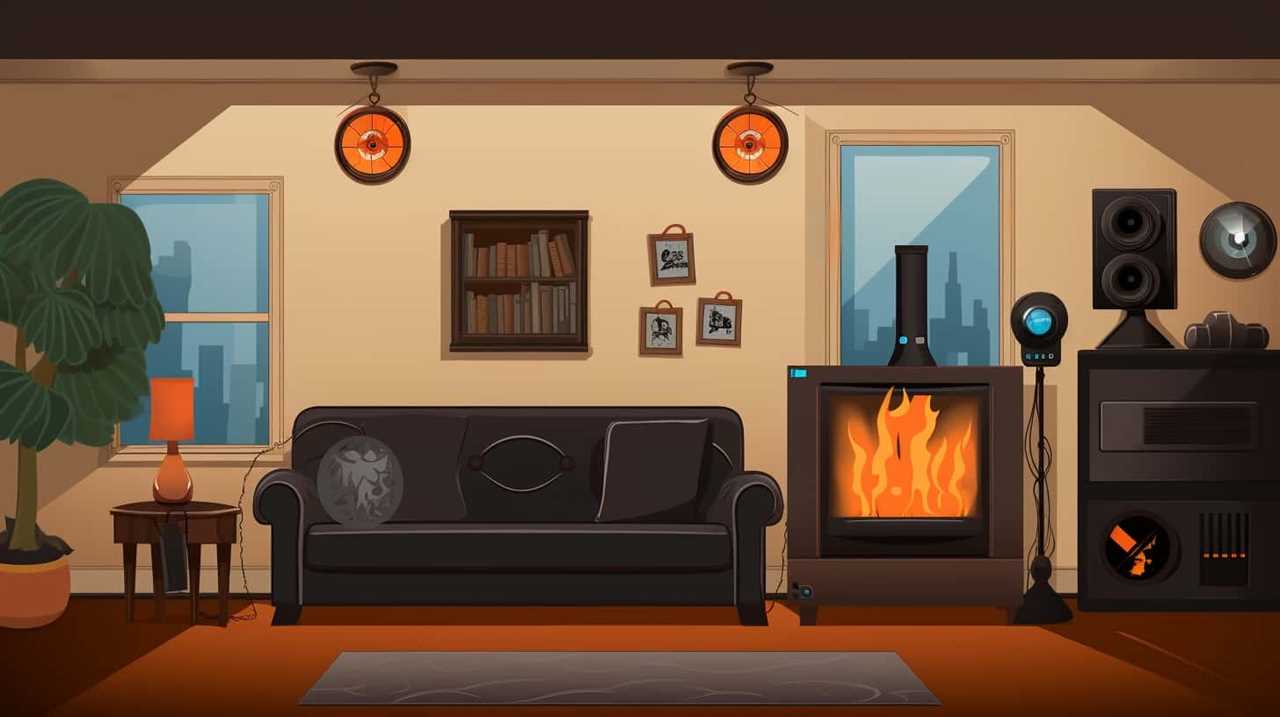
To address this issue, there are a few measures we can take:
- Use smart power strips: These power strips can detect when devices aren’t in use and automatically cut off power to them, eliminating phantom power consumption.
- Invest in energy-efficient appliances: Energy-efficient appliances consume less electricity overall, including during standby mode.
- Unplug unused devices: Simply unplugging devices when not in use can also help reduce phantom power consumption.
Standby Power Usage
Often, we mistakenly believe that appliances don’t consume electricity when they’re plugged in but not in use. However, this is a common misconception. Appliances that are in standby mode still draw power, albeit in smaller amounts.
Standby power usage refers to the electricity consumed by devices that are plugged in but not actively being used. This power wastage can add up over time and contribute to unnecessary energy consumption and higher electricity bills.
To reduce standby energy, it’s important to unplug devices when they aren’t in use or utilize power strips with an on/off switch. By understanding power wastage and taking proactive steps to reduce standby energy, we can make a significant impact on our energy consumption.
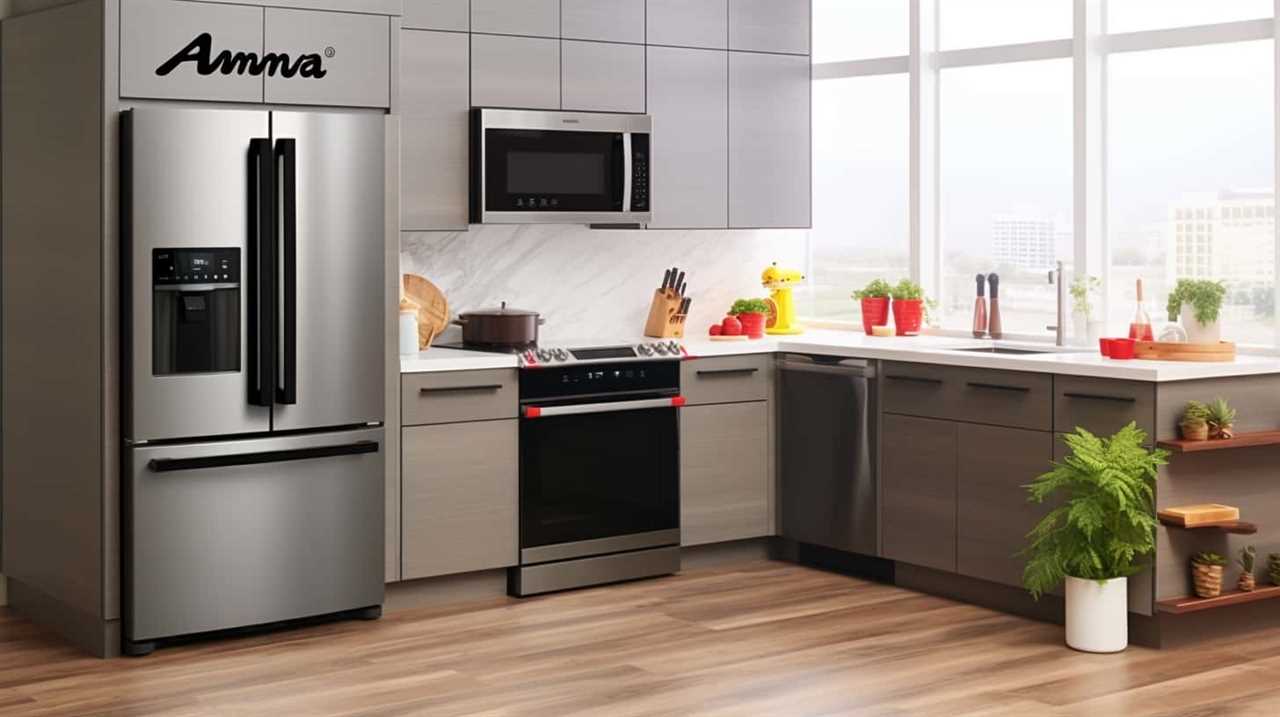
Energy-Saving Options Available?
One option to save energy is to utilize power strips with an on/off switch, which allows us to easily control the standby power usage of our plugged-in devices.
Here are three energy-saving options to consider:
- Smart power strips: These power strips are equipped with energy-saving features that automatically cut off power to devices when they aren’t in use. They can also be programmed to turn off power during specific times of the day.
- Energy-efficient technologies: Look for appliances and devices that have energy-efficient technologies, such as ENERGY STAR certified products. These devices are designed to consume less energy while maintaining optimal performance.
- Power-saving features: Many modern appliances and devices come with power-saving features that reduce energy consumption. These features can include automatic sleep modes, timers, and brightness controls.
By utilizing these energy-saving options, we can reduce the standby power usage of our devices and save on electricity costs.
Now, let’s uncover the phantom energy usage in the next section.
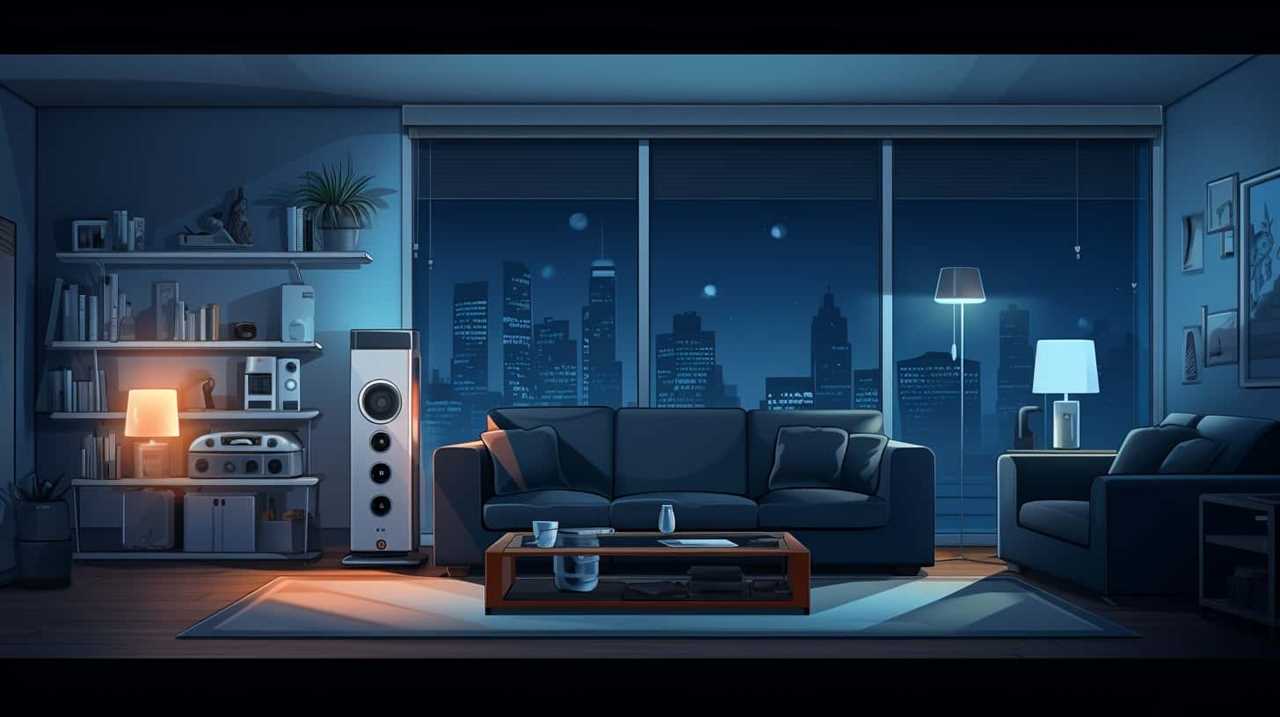
Uncovering Phantom Energy Usage
Our exploration into uncovering phantom energy usage reveals the surprising extent of appliances’ continued electricity consumption even when they are plugged in. This unseen energy drain, also known as hidden electricity usage, can add up significantly over time. To illustrate this, let’s take a look at the following table:
| Appliance | Standby Power (Watts) | Annual Energy Cost ($) |
|---|---|---|
| Television | 5 | $10 |
| Computer | 2 | $4 |
| Microwave | 3 | $6 |
| Coffee Maker | 1 | $2 |
| Game Console | 8 | $16 |
As we can see, even seemingly innocuous appliances can contribute to our energy bills. This emphasizes the importance of understanding and managing our energy usage. But how exactly do appliances draw electricity in standby mode? Let’s delve into that next.
How Appliances Draw Electricity in Standby Mode
When appliances are in standby mode, they still draw electricity, albeit in smaller amounts compared to when they’re fully operational. This is known as standby power consumption, or phantom energy usage.
Appliances in standby mode continue to use electricity to power certain functions such as clock displays or remote control sensors. However, advances in technology have led to the development of energy-saving standby options that reduce electricity consumption during standby mode.
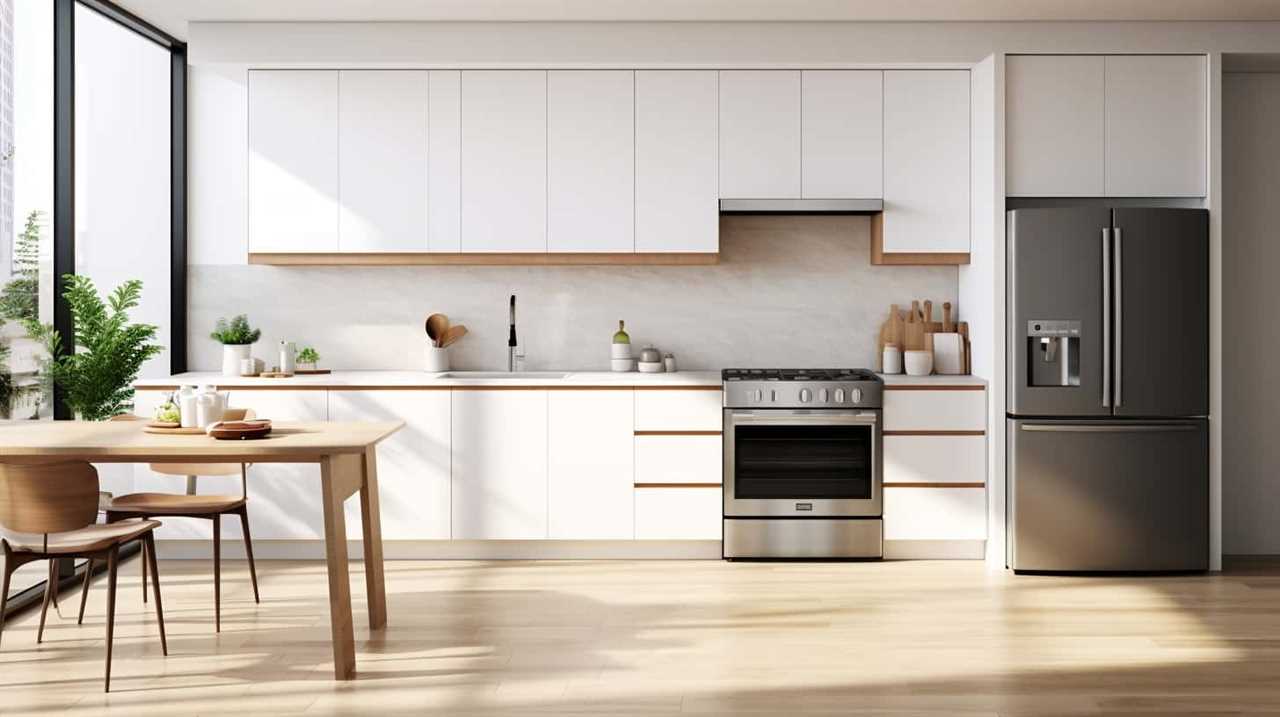
Standby Power Consumption
Appliances draw electricity in standby mode through their own internal circuits. Standby power consumption refers to the amount of energy that appliances consume while in standby mode. Understanding the implications of standby power is crucial for those seeking to reduce their energy usage and lower their electricity bills.
Here are three ways to minimize standby power:
- Unplug appliances when not in use: By simply unplugging devices when they aren’t needed, you can prevent them from drawing standby power altogether.
- Use power strips with switches: Power strips with individual switches allow you to easily cut off power supply to multiple devices simultaneously.
- Invest in energy-efficient appliances: Energy Star certified appliances are designed to consume less standby power, making them a smart choice for reducing energy waste.
Energy-Saving Standby Options
We can explore various energy-saving standby options to understand how appliances draw electricity in standby mode. When it comes to reducing standby power consumption, there are several energy-efficient standby options available.
One option is the use of power strips with built-in timers or smart plugs that automatically cut off power supply to appliances when they aren’t in use. These devices can be programmed to turn off power during specific hours or when appliances are idle for a certain period of time.
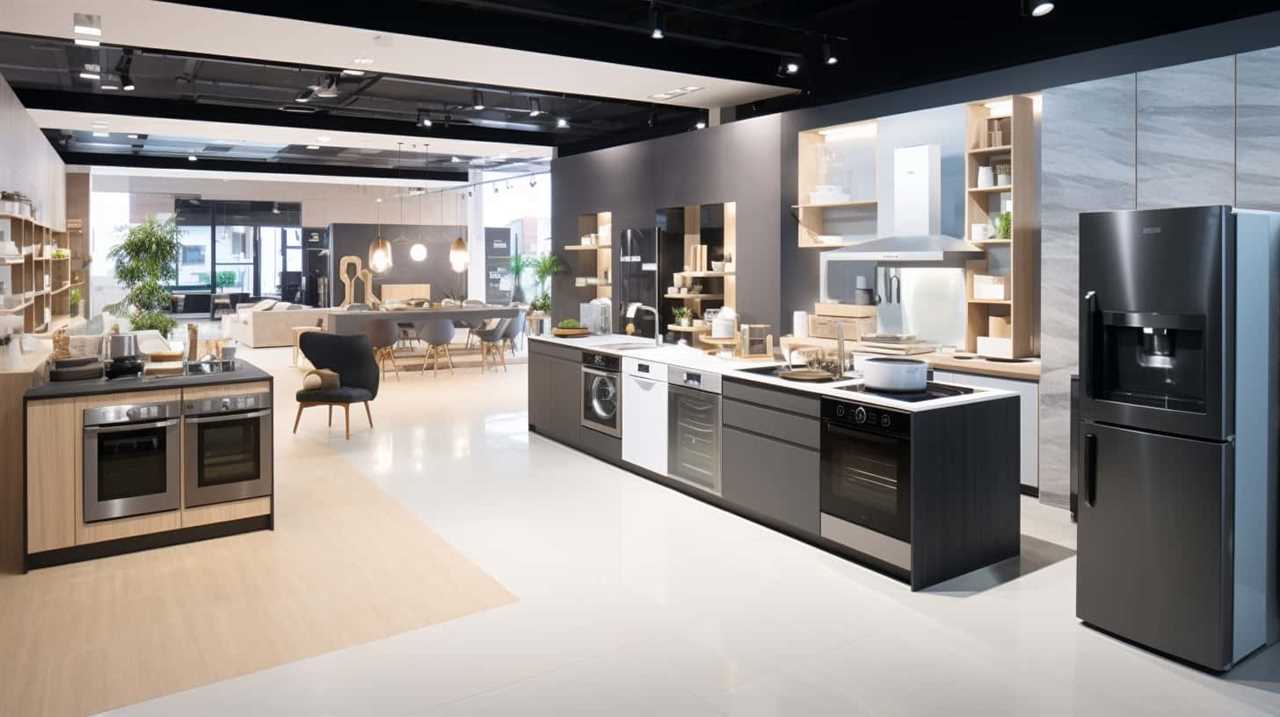
Another option is the use of appliances with low-power modes or energy-saving features, such as sleep mode or power-saving settings. These modes reduce the amount of electricity consumed by the appliance when it isn’t actively in use.
By implementing these energy-saving standby options, we can significantly decrease standby power consumption and promote energy efficiency.
Transitioning into the subsequent section about ‘energy vampires: identifying the culprits’, we’ll now discuss how to identify these power-hungry devices.
Energy Vampires: Identifying the Culprits
One of the first steps in addressing energy vampires is identifying which appliances are the culprits. To debunk myths surrounding energy vampires and understand the hidden costs of standby power, it’s crucial to identify the specific appliances that consume energy even when not in use.

Here are three sub-lists to help you identify these energy vampires:
- Always-On Appliances:
- Devices that require constant power, such as cable boxes, DVRs, and modems.
- Appliances with remote controls, like televisions and sound systems.
- Devices with LED lights, such as alarm clocks and power strips.
- Chargers and Adapters:
- Phone chargers left plugged in, even when the phone is fully charged.
- Laptop chargers connected to the wall when not in use.
- Adapters for small appliances, like coffee makers and electric toothbrushes.
- Miscellaneous Culprits:
- Appliances with digital displays, such as microwaves and ovens.
- Devices with instant-on or quick-start features, like computers and game consoles.
- Devices with networking capabilities, including smart home devices and Wi-Fi routers.
Assessing the Impact of Plugged-in Electronics
To further understand the hidden costs of standby power and address energy vampires, it’s important to assess the impact of keeping electronics plugged in on a regular basis. Many people tend to underestimate the standby power consumed by their plugged-in electronics, leading to hidden energy consumption. Standby power, also known as vampire power or phantom load, refers to the electricity consumed by devices that are plugged in but not actively in use. This includes devices such as televisions, game consoles, computers, and chargers. Even when these devices are turned off or in standby mode, they still draw power, contributing to unnecessary energy usage and increased electricity bills.
By assessing the impact of plugged-in electronics, we can better understand the extent of this hidden energy consumption and take measures to reduce it.
Transitioning into the subsequent section about ‘exploring the costs of idle appliances’, we’ll delve deeper into the specific financial implications of keeping appliances plugged in when not in use.
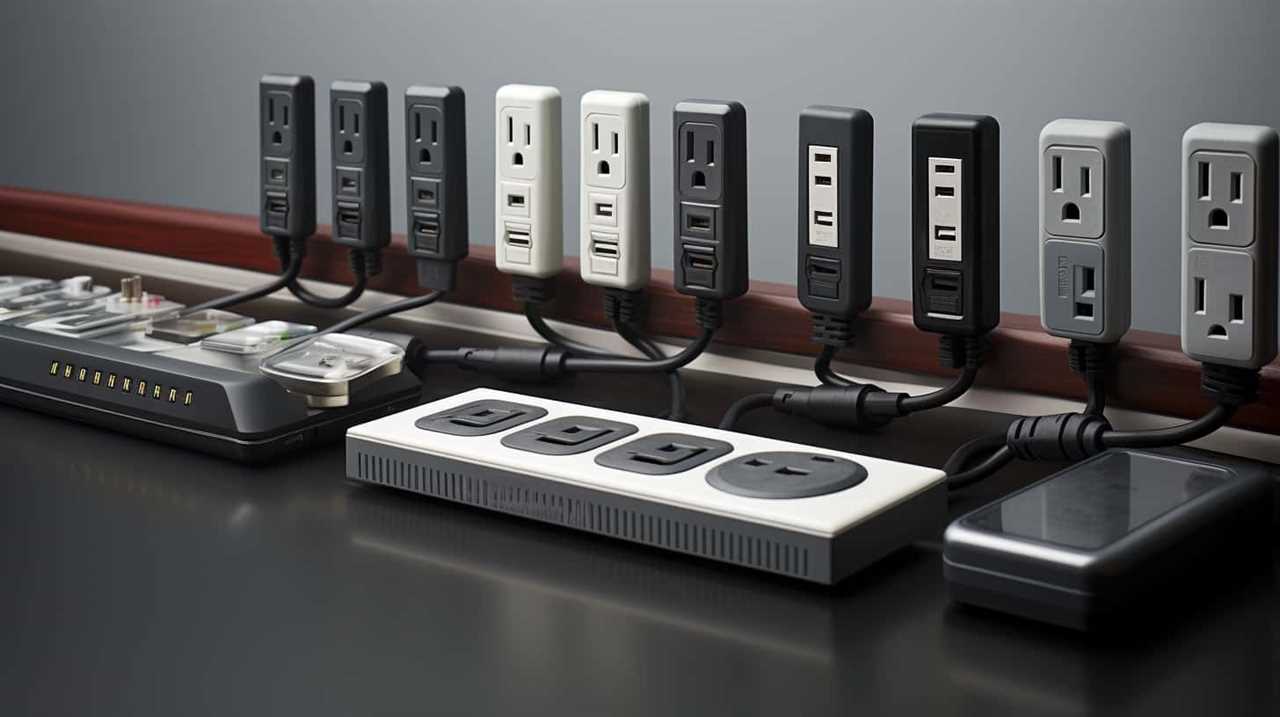
Exploring the Costs of Idle Appliances
Continuing our assessment of the impact of plugged-in electronics, let’s now delve into the costs incurred by keeping appliances idle. Understanding standby power savings is crucial in minimizing appliance idle costs.
Here are three key points to consider:
- Standby power consumption: Idle appliances still consume electricity, often referred to as standby power. This power is necessary to maintain certain functions like clocks, timers, or remote control capabilities. However, it’s important to note that standby power can account for a significant portion of household energy usage.
- Phantom load: Some appliances, such as televisions or game consoles, continue to consume power even when turned off. This is known as phantom load. To minimize this, consider using power strips with integrated switches or completely unplugging appliances when not in use.
- Energy-efficient alternatives: Investing in energy-efficient appliances can significantly reduce idle costs. Look for appliances with the Energy Star label, which indicates that they meet strict guidelines for energy efficiency.
Tips for Minimizing Standby Power Consumption
To minimize standby power consumption, we can employ simple strategies.
By implementing these energy-saving strategies, we can reduce the amount of electricity used by appliances when they aren’t in use.
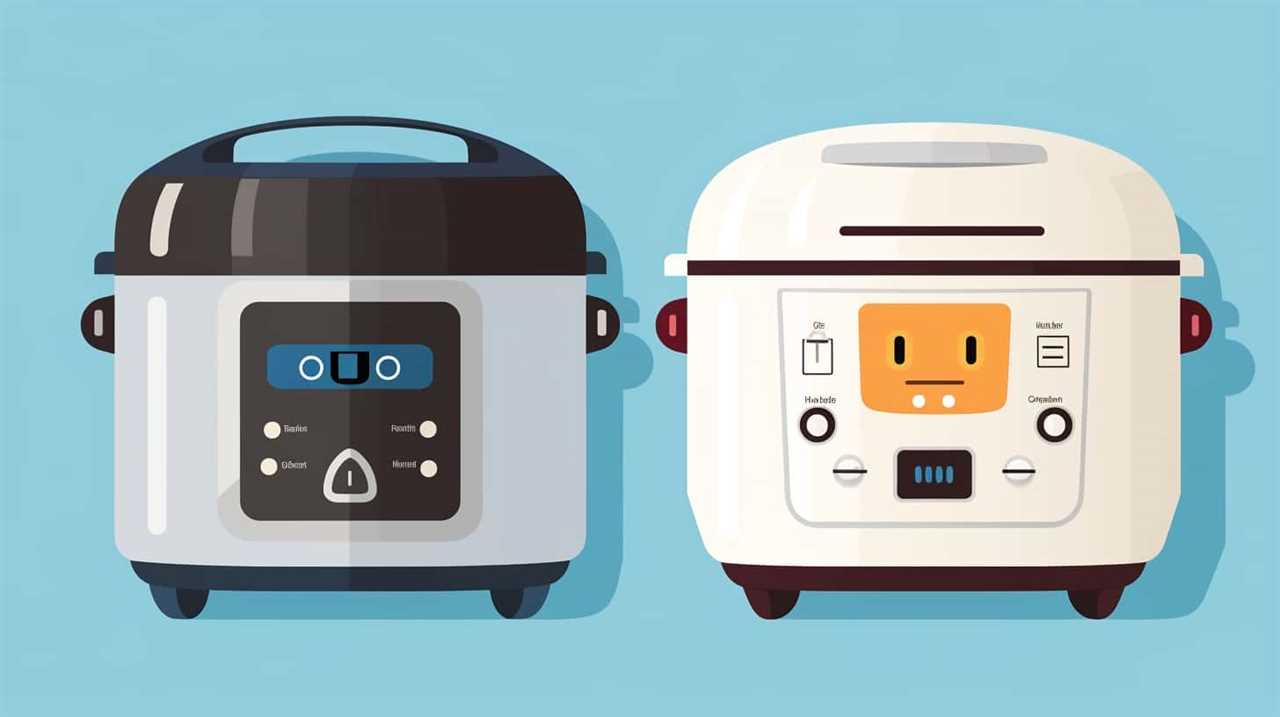
One effective method is to use power strips or surge protectors with an on/off switch. This allows us to easily turn off multiple appliances with one switch, cutting off their standby power completely.
Additionally, unplugging appliances when they aren’t in use can significantly reduce standby power consumption.
It’s also important to choose appliances with lower standby power ratings and look for energy-efficient models.
Furthermore, adjusting power settings on devices such as computers and televisions can help minimize standby power consumption.
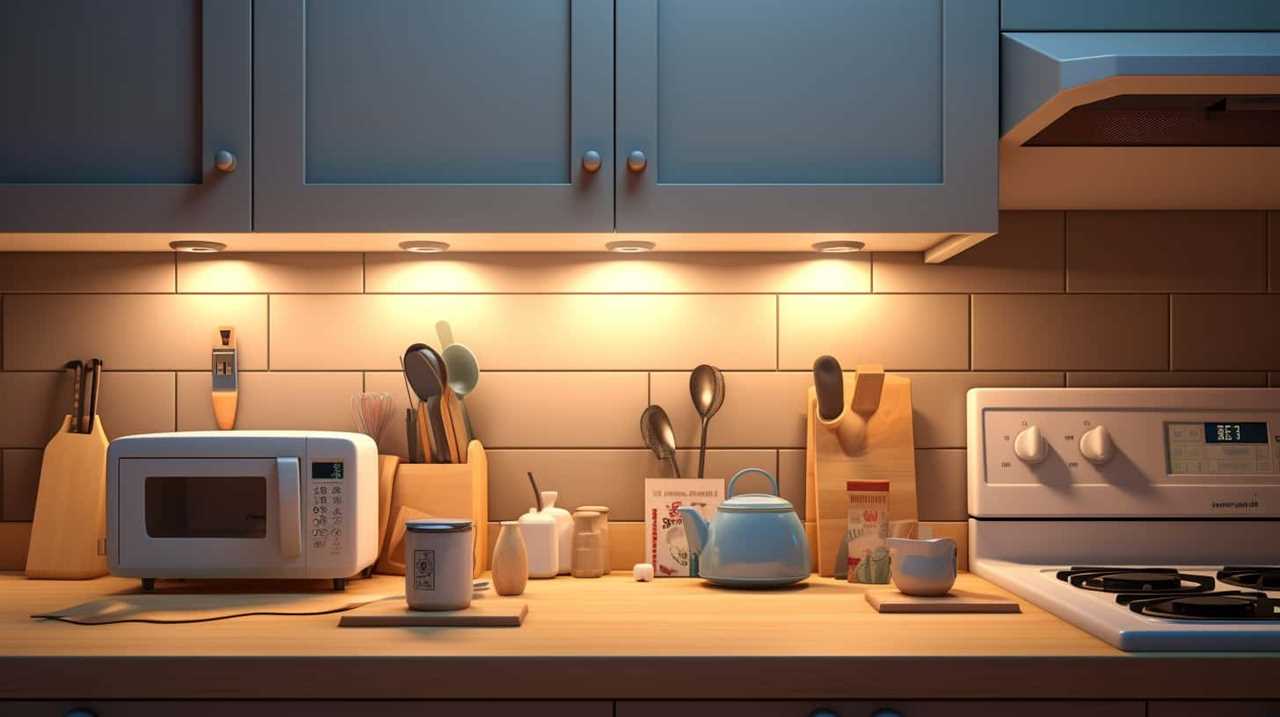
Smart Solutions to Reduce Energy Waste
One smart solution we can implement to reduce energy waste is by utilizing smart power strips or surge protectors with an on/off switch. These energy efficient power strips are designed to automatically cut power to devices that are in standby mode or not in use.
Here are three ways smart power strips can help reduce energy waste:
- Smart home automation: Smart power strips can be integrated into a smart home automation system, allowing you to control and monitor your devices remotely. This means you can easily turn off appliances or electronics that aren’t in use, even if you’re not at home.
- Power scheduling: With smart power strips, you can set schedules for when certain devices should be turned on or off. This ensures that energy isn’t wasted when appliances are left running unnecessarily.
- Power monitoring: Some smart power strips come with built-in energy monitoring features. This allows you to track the energy consumption of individual devices and identify any power-hungry appliances that may be contributing to energy waste.
Taking Control of Your Appliance Electricity Usage
Our approach to taking control of our appliance electricity usage involves understanding the power consumption of our devices. By knowing how much energy each appliance consumes, we can make informed decisions on how to reduce waste and save on electricity costs.
One way to do this is by using energy monitoring devices that can measure the power usage of individual appliances. These devices provide real-time data on energy consumption, allowing us to identify which appliances are using excessive amounts of electricity.

Once we’ve this information, we can take action by unplugging devices when not in use, using power strips with on/off switches, or replacing old appliances with more energy-efficient models.
Frequently Asked Questions
How Can I Determine if My Appliances Are Using Standby Power?
To determine if appliances use standby power, we can employ energy monitoring devices. Unplugging appliances when not in use is an effective way to save energy and reduce electricity consumption.
Are All Appliances Affected by Phantom Energy Usage?
Yes, all appliances are affected by phantom energy usage. Energy-saving appliances minimize this impact by reducing standby power consumption. Reducing phantom energy is important for the environment and achieving energy efficiency.
Can Leaving My Devices Plugged in Cause a Significant Increase in My Electricity Bill?
Leaving devices plugged in can lead to a significant increase in energy consumption and have a negative impact on the environment. It’s vital to unplug appliances to prevent unnecessary electricity usage.
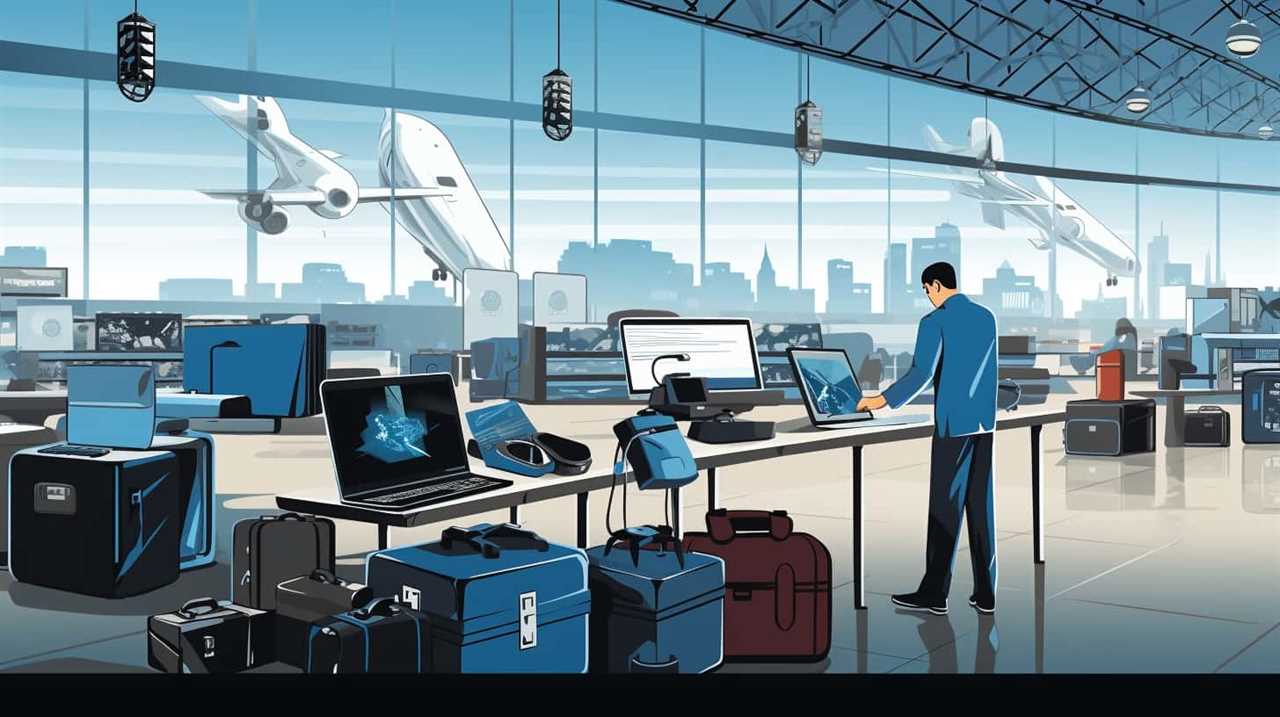
Are There Any Safety Concerns Associated With Leaving Appliances Plugged In?
Appliance safety concerns arise from leaving appliances plugged in. Leaving appliances plugged in can lead to potential hazards such as electrical fires and damage to the appliance due to power surges. It is important to unplug appliances when not in use.
What Are Some Practical Ways to Reduce Standby Power Consumption in My Home?
Energy saving devices and power strips with timers are practical ways to reduce standby power consumption in our home. By using these tools, we can effectively manage and minimize the amount of electricity appliances use when they are plugged in.
Conclusion
In conclusion, it’s important to understand that appliances do indeed continue to use electricity when they’re plugged in, even if they’re idle or in standby mode. This phenomenon, known as standby power consumption or phantom energy usage, can significantly contribute to energy waste and higher electricity bills.
By being mindful of this and implementing smart solutions, such as unplugging devices when not in use or using power strips, we can take control of our appliance electricity usage and reduce energy waste.
